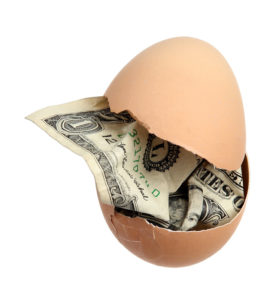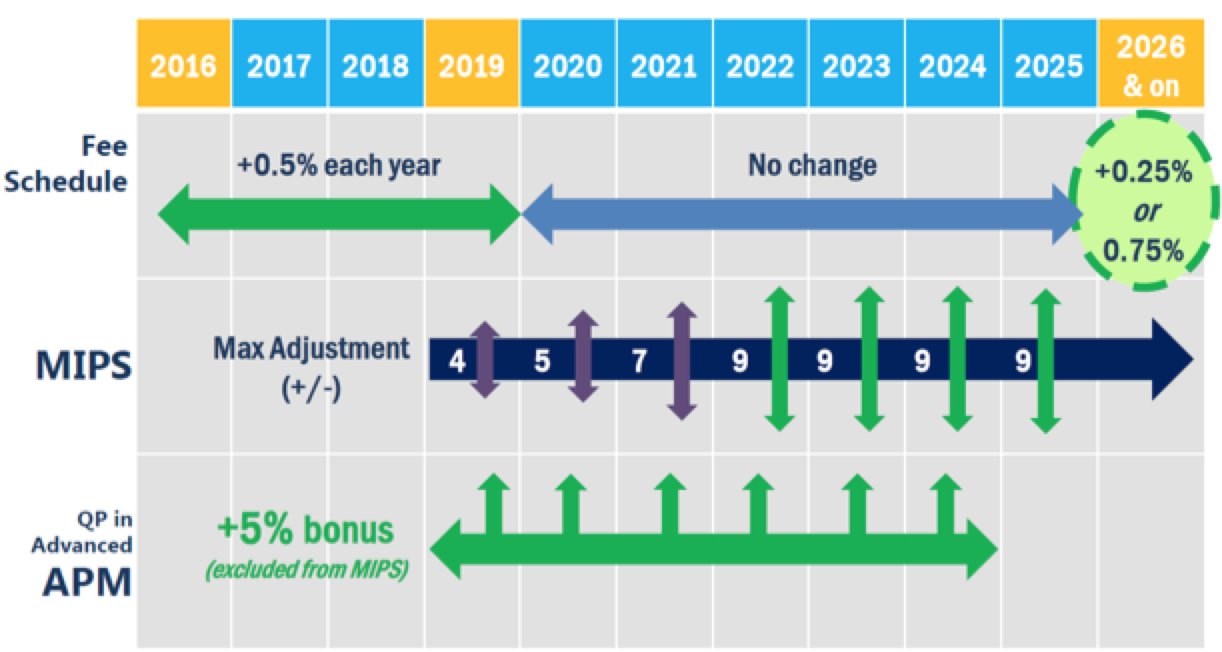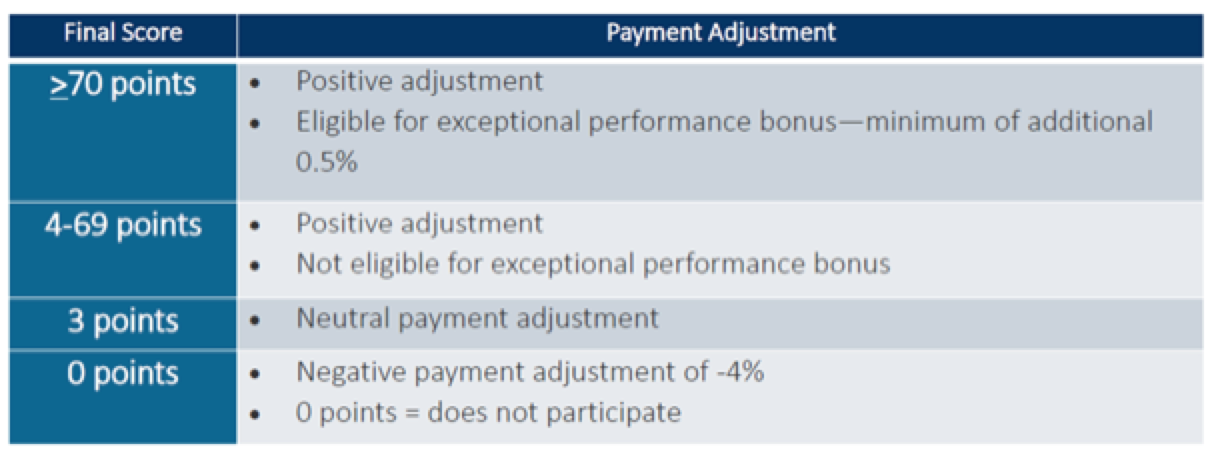 Last week I went to my daughter’s preschool to help hide Easter eggs. Other moms were there, each with their 10 eggs in tow. We were all chit-chatting about what we put inside our Easter eggs and one mom (with glitter-bedazzled eggs) exclaimed, “Money!” At first I thought she meant pennies or nickels, but nope – paper bills!
Last week I went to my daughter’s preschool to help hide Easter eggs. Other moms were there, each with their 10 eggs in tow. We were all chit-chatting about what we put inside our Easter eggs and one mom (with glitter-bedazzled eggs) exclaimed, “Money!” At first I thought she meant pennies or nickels, but nope – paper bills!
Before the hunt, somewhat jokingly, I told my daughter to “go find the 10 glitter eggs!” She came back with 3 out of the 10. Pretty darn good. However, her class only has 10 children. Had it been 100 egg hunters, her likelihood of finding any would be pretty slim.
So, why am I talking about Easter eggs (besides the obvious Holiday that just passed)? The experience with my daughter’s class led me to think about the hunt for money. We all know there is money to be made in the Merit Incentive-Based Payment System (MIPS), but what are the odds that you will end up with a glitter egg? Is the hunt worth it?
The financial breakdown
Before we start, let’s revisit the image below. Every time I give my MIPS spiel in public, this happens to be the slide that gets the most questions – so let’s talk through it!
Fee schedule
In the top row labeled “fee schedule” you will notice that the fee schedule still exists. It does not (and will not) go away. Starting last year, CMS will bump the fee schedule an additional 0.5% each year until 2019. After that the fee schedule freezes. That’s right. Frozen. You will not get any increases, period. It will eventually unfreeze in 2026 and you will either get a 0.25% OR a 0.75% increase each year depending on what MACRA track you are on. The MIPS providers will get 0.25% and the Advanced APM providers will get 0.75%.
MIPS adjustments
The second row in the image above represents the positive or negative dollars that you can earn (or lose) in MIPS. As you can see it starts at a range between -4% to 4% in 2019 and increases in the next few years. The amount you will earn (or lose) will depend on your final MIPS composite performance score and where you fall in the table below.
The bar is set low for 2017 – at a measly 3 points. Each year CMS will change the bar. We will go into this more later.
QP bonuses
The last row is for those who are participants in an advanced APM and met Qualifying Participant (QP) status. These people will get a 5% lump sum bonus each year that they qualify as a QP.
So why would you go the Advanced APM route if you will only get a 5% lump sum increase each year if you could potentially make 9%+ in MIPS? Sometimes we believe we are the best of the best. The cream of the crop. However, in reality, there may be someone just a touch better than you that pushes you further down the totem pole. Now that doesn’t mean you don’t do better work, it could just mean the other person is a better data enterer, but I digress…we covered that one before. Also, the 5% lump sum bonus is completely separate from any incentives you could possibly earn within your APM.
What egg will you end up with?
I find that providers normally fall into one of three MIPS personalities: the competitor, the carefree, or the rebel. Now to preface, there are probably a lot more than three, but these are the most common that I see. Your personality type will normally drive the type of egg you will end up with.
The competitor (the golden egg)
There are always a few in every crowd. These are the people who are willing to play the game. They have a strategy for the egg-hunt. They and their staff are fully educated on what questions to ask and boxes to check. They check their MIPS scores weekly (if not daily) to see if they are falling behind. It probably sounds like these people will collects a lot of golden eggs, right? Maybe, maybe not. As the years go on, a clinician’s MIPS composite performance score will be based upon factors that will be hard to control (such as quality and resource use). This will make the game harder to play.
The carefree (the empty egg)
The carefree types could care less about chasing a prize. To them, it’s more-so about avoiding a penalty then reaping a reward. In many instances, these people will do the bare minimum. Normally these are the people that say, “Leave me alone. Let me see patients, but I don’t want a penalty.” Sound familiar? Yes, I’ve met a lot of you.
This seems like a harmless way to go, right? I suppose so if you are OK with working harder for more money. Remember above I mentioned that the fee schedule will freeze. That means you will not see an increase in any of your Part B payments until 2026. So the only way you will “get more money” is by seeing more patients, doing well in MIPS, joining a successful APM, or becoming a QP in the advanced APM path.
Also, this tactic may only work in 2017 (when avoiding a penalty is super easy). Next year, CMS could up their composite performance score threshold, meaning your “bare minimum” is considered lower than the threshold. Or, in other words, you could get a penalty. Which brings me to the next guy…
The rebel (the rotten egg)
As you can probably already guess, this personality type either doesn’t care about the penalty or wants to make a statement. This provider thinks the penalty is worth avoiding the painful reporting process. Some common phrases you will hear are, “I would rather lose $X dollars than put up with MIPS reporting!” or “I’ll retire before the penalty year kicks in!” or – my favorite – “Trump will get rid of it!”
However, your MIPS score has a much greater significance than just dollars lost that year. A poor MIPS score could also impact bargaining power in certain situations such as mergers and acquisitions of practices, negotiating fees with insurance companies, clinician recruitment, provider-comparison tools and so on.
The others
Now there are many different personality types that are not represented above. Such as the “team player.” This person may be a member of a MIPS APM that did not perform well as a group, even if he/she personally did a great job.
Or, perhaps most prevalent, “the clueless.” According to a Deloitte survey, 50% of physicians have never heard of MACRA. Obviously our blog readers wouldn’t fall into this one!
The little egg in 2017
Remember, MIPS is a budget-neutral program. That means those who win are taking from those who lose. In 2017, there will be a very small pool of losers (because the bar is set very low). The Centers of Medicare and Medicaid Services (CMS) estimates that in 2019, 94.7 percent of MIPS-eligible clinicians will have a positive or neutral MIPS payment adjustment, and 5.3 percent will have a negative adjustment. That means there will be a small pool of golden eggs to grab. CMS also estimates that those with a MIPS CPS of 100 will likely earn less than a 4% bonus. However, CMS will pump an additional $500 million annually from year 2019 through 2024 to incentivize exceptional performers.
There are a lot of factors at play here – it’s a complicated situation. What personality type are you and what are you doing (or not) to find a golden egg?
 Diana Strubler, Policy and Standards Senior Manager, joined Acumen in 2010 as an EHR trainer then quickly moved into the role of certification and health IT standards subject matter expert. She has successfully led Acumen through three certifications while also guiding our company and customers through the world of Meaningful Use, ICD-10 and PQRS.
Diana Strubler, Policy and Standards Senior Manager, joined Acumen in 2010 as an EHR trainer then quickly moved into the role of certification and health IT standards subject matter expert. She has successfully led Acumen through three certifications while also guiding our company and customers through the world of Meaningful Use, ICD-10 and PQRS.
Image from www.canstockphoto.com






Leave a Reply